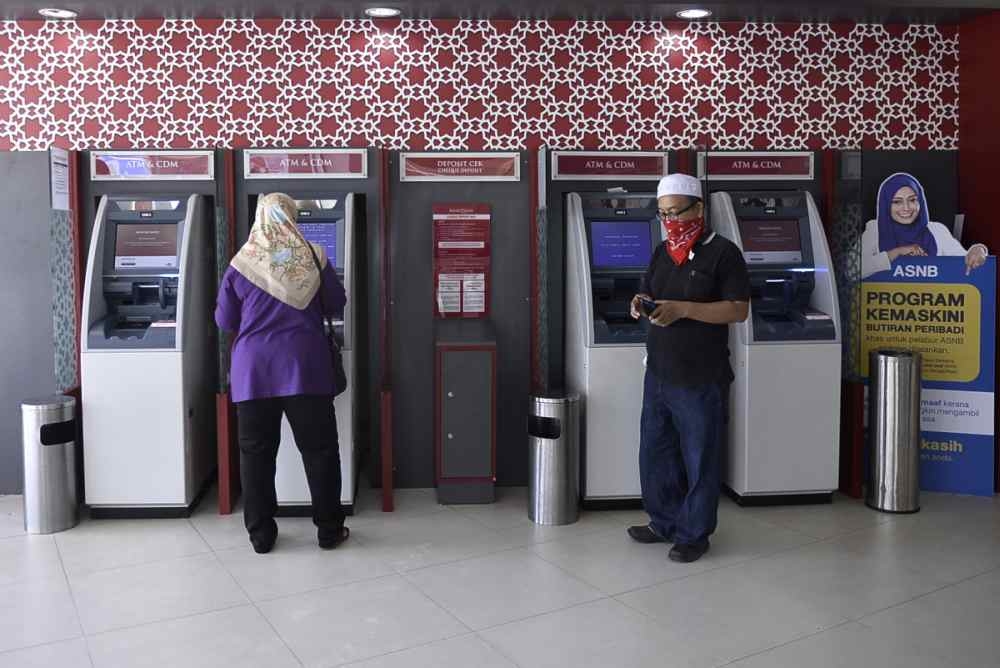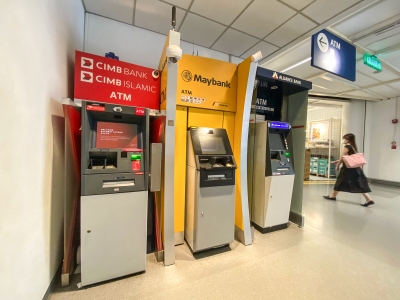KUALA LUMPUR, Oct 2 — An automated teller machine (ATM) is such a ubiquitous sight that urban residents may not even notice it until they need one, but for some Malaysians, seeing one could mean they are nearly an hour’s drive away from home.
They are so taken for granted in cities that there was even derision online when news emerged during the Nenggiri state constituency by-election in August that residents in the Kelantan district celebrated the installation of their first ATM this year.
Contrary to popular belief, however, the decision whether to install ATMs is not done on a whim.
For this, Malay Mail contacted Bank Negara Malaysia (BNM) to find out what determines the deployment of financial access points (FAP) including ATMs by financial institutions (FI).
Not as simple as ABC
Even with the growing popularity of e-wallets in Malaysia, cash remains the primary mode of payments in the country.
Consequently, BNM said it was a priority to ensure the general public has reliable financial accessibility, particularly in the rural areas.
The central told Malay Mail that there were several considerations when deciding if facilities including ATMs should be introduced at a specific location.
“Specific to ATM deployment, key factors considered by the FIs include the suitability of the location from a security perspective, the operational costs to maintain and replenish cash at the ATM, and the necessary infrastructure within the area.
“Other key factors also include potential demand for the service which can be linked to population demographics in the area (For example, population density, income level, and age group, etc),” Malaysia’s central bank said in an email response to Malay Mail’s queries.
To date, there are more than 13,942 ATMs nationwide — or 0.4 ATM per 1,000 inhabitants — with 96 per cent of sub-districts in Malaysia having at least one FAP offered by a FI.
While it took until the by-election for Nenggiri to get its first ATM, the constituency now has four.
“If a constituency wishes to install an ATM, they can request it directly from the respective banks,” BNM added.
Trivia: ATMs were first introduced with BNM’s approval in 1981. Before it was termed ATM, these machines were called Electronic Teller Card (ETC).

Customers use automated teller machines at a Bank Islam branch in Shah Alam on March 26, 2020. — Picture by Miera Zulyana
Two types of ATMs
While Malaysians likely associate ATMs with banks, BNM said that there are two types of such machines: ones deployed by financial institutions and those operated by independent ATM acquirers (IAA) such as those under the Malaysian Electronic Payment System (MEPS) ATM network.
“ATMs deployed by IAA generally offer basic services such as cash withdrawals, interbank fund transfers and balance inquiries at a minimal fee; while bank-owned ATMs may offer a broader range of services, such as bill payments and investment at zero costs to their own customers,” BNM explained.
BNM said competition among banks and IAA in providing ATM services has the potential to encourage greater deployment of ATMs in locations where there is limited or no presence of bank ATMs such as in rural areas, ultimately benefiting financial consumers.
“Cash together with other financial services are also accessible via other FAPs provided by Fis that complement ATMs which include agent banks, Bank Bergerak and MyDebit Cash Out (MDCO) services.
“Such services are deployed interchangeably to widen financial access and inclusion, subject to the suitability of each service within a particular area,” it said.
The central also said it worked with the financial service industry stakeholders on various programmes to promote the safe use of digital payments among users.
“Such programmes will not only reduce cash dependency but also have the strong potential to enhance the livelihood of communities through higher productivity gained from the convenience of digital payment and increase sales from wider market reach,” it said.

